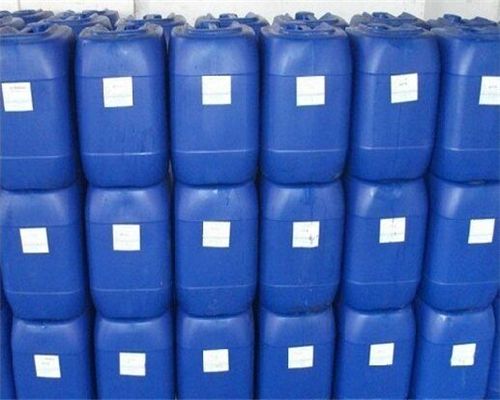Lithium battery is a new type of green secondary battery successfully developed in the 1990s. It has developed rapidly in the past decade and has occupied the largest market share in the small secondary battery market. It has become the most competitive battery in the field of chemical power applications. . Compared with secondary batteries such as lead-acid batteries, nickel-cadmium batteries, and nickel-hydrogen batteries, lithium batteries have outstanding advantages such as high energy density, long cycle life, small self-discharge rate, no memory effect, and green environmental protection. Lithium batteries have been widely used in people's lives with the continuous advancement of technology, such as portable electronic products, new energy vehicles and energy storage.
Lithium batteries are widely used in portable electronic products such as notebook computers, mobile phones, digital cameras and digital video cameras, among which laptops and mobile phones are the most used. The financial crisis since 2008 has had a certain impact on the consumption of global electronic products. However, with the gradual effective effect of national economic stimulus policies, the sales of portable electronic products such as notebook computers and mobile phones have maintained a good momentum. In 2009, the sales volume of global notebook computers still increased by 18.71% compared with 2008, showing a rapid growth trend. The growth rate of major manufacturers will reach 14.67%.
At the same time, with the application and popularization of new information technologies such as 3G and next-generation Internet, the market for portable electronic products will maintain a long-term prosperity. For example, in the Chinese market, 3G mobile phone production and sales grew rapidly in 2008, with a total sales of 66.37 million units, a year-on-year increase of 90%. Recently, Apple Computer Inc. launched a new portable tablet product iPAD, which immediately set off a new wave in the global information electronics industry. Tablet PC is regarded as the next new electronic product king. In this way, the diversification of functions and standby requirements of 3G mobile phones, iPADs and other products also put forward higher requirements on the capacity, safety performance and cycle performance of lithium batteries, and also created more positive electrode materials for high-capacity lithium batteries. Big room for growth.
The application of lithium batteries with more imagination is in the field of electric vehicles. The shortage of global oil resources and the deteriorating climatic environment have brought severe challenges to the development of modern human society. The development of new energy vehicles that save energy and emit no waste has been highly valued by governments. The production and sales data of the future electric vehicles of the world's major auto manufacturers show that the share of lithium battery electric vehicles is small before 2009, and electric vehicles mainly use nickel-hydrogen batteries as the power source (600405); since 2010, auto manufacturers have begun to increase sharply. Increase the proportion of lithium batteries as a power source, 2010-2013 is the rapid growth period of lithium battery electric vehicles, and reached 2.26 million units in 2013, with an average annual compound growth rate of 124.78%, and will enter a steady development stage in 2013-2018. In 2018, it reached nearly 6 million vehicles, with an average annual compound growth rate of 20.90%.
Lithium batteries also have important applications in the field of energy storage. Firstly, they can solve the peak-to-valley adjustment problem of grid electricity. Secondly, clean energy sources such as wind energy, solar energy and tidal energy are intermittent energy sources. Lithium-ion energy storage equipment cooperates with the above-mentioned clean energy sources to store energy during power generation and release energy during intermittent periods, which can effectively alleviate China's energy shortage. The status quo.
Cleaning Agent:
The difference between organic cleaning agent and inorganic Cleaning Agent simply, cleaning agent cleaning agent is made of organic compounds containing carbon, cleaning agent made of inorganic compounds, cleaning agent is not containing carbon, therefore they belong to the inorganic. Classification method of cleaning agent is also a lot of countries are not the same, we usually divided into water, half water, non water cleaning agent three categories.
How to select a good cleaning agent:
The chemical stability, not easy to be cleaned and reacts; the surface tension and viscosity, strong penetration; the low boiling point, can be dry; there's no flash point, non flammable; the KB value should not be too high, not miscible with the material to be washed; the low toxicity, safe use; and non ODS and low GWP value (global warming potential), and environmental protection.
Application Requirement:
For chemical industrial cleaning, should meet the following requirements.
The cleaning agent used for cleaning purposes and different cleaning objects, can be emphasized or choice for these requirements. The dirt cleaning speed, dissolving dirt thoroughly. The cleaning agent itself has a strong reaction to the dirt, dispersed or dissolved scavenging capacity and in the limited time, can thoroughly remove dirt. The cleaning of the object damage should be in production license limits, and corresponding control measures for corrosion of metals may cause. The cleaning agent is cheap and easy to get, set foot on the localization; low cleaning cost, does not cause too much the consumption of resources. The cleaning agent on the biological and environmental non-toxic or low toxicity, the generated gas, waste water and waste residue, should be able to be disposed to comply with relevant state regulations. The cleaning condition is mild, try not to depend on the force of export The strengthening conditions, such as temperature, pressure, mechanical energy and does not require excessive requirements. Such as the cleaning process in the cleaning surface of the object remains insoluble, does not produce new stain, do not form a new harmful to the subsequent process of covering layer, does not affect the quality of the products. It does not affect the bubble and smell the cleaning process and on-site health.

Cleaning Agent
Cleaning Agent,Washing Agents,Pcb Cleaning Agents,Cleaning Decoloring Agent
VESTA Motoring Ltd , http://www.vesta-industry.com